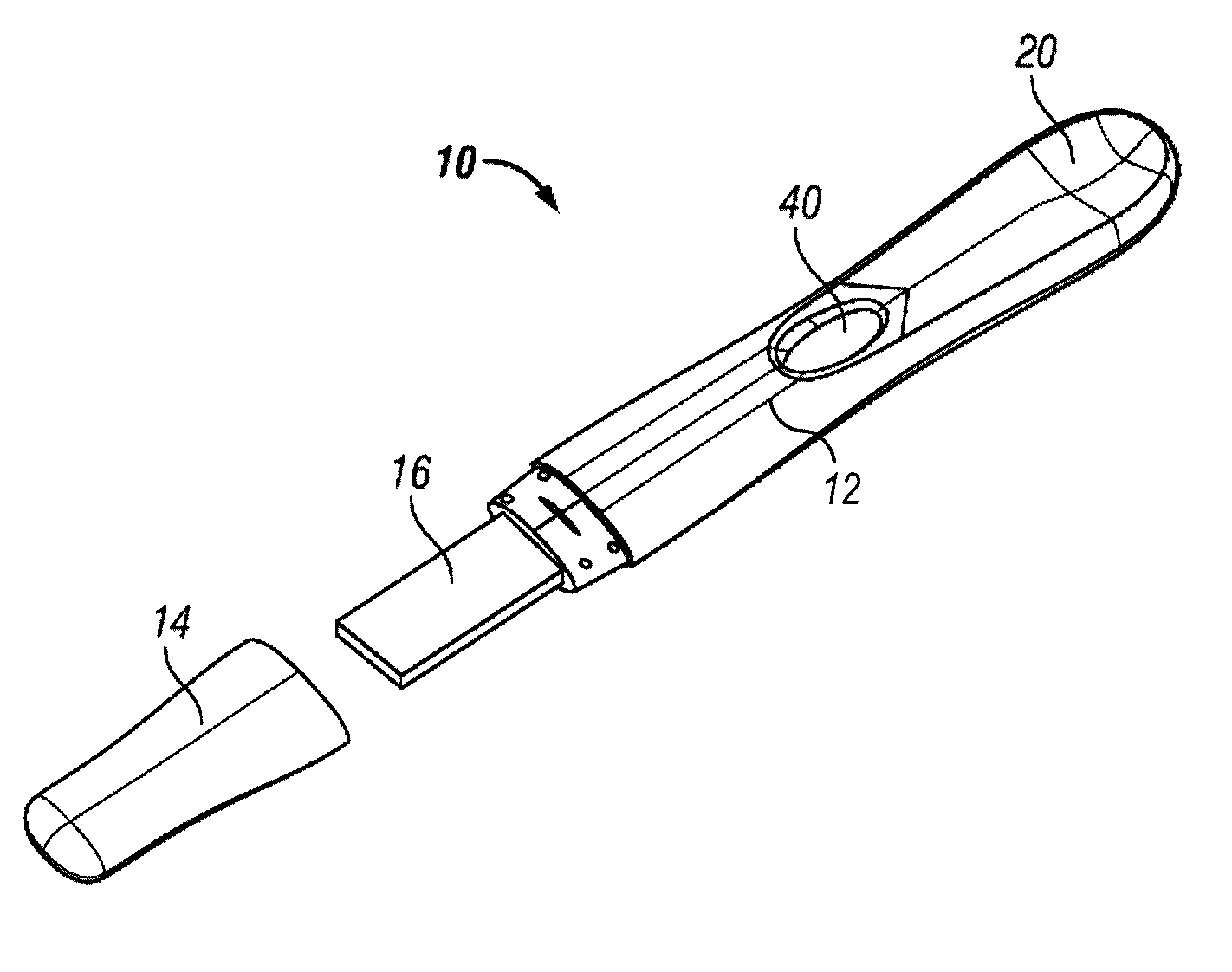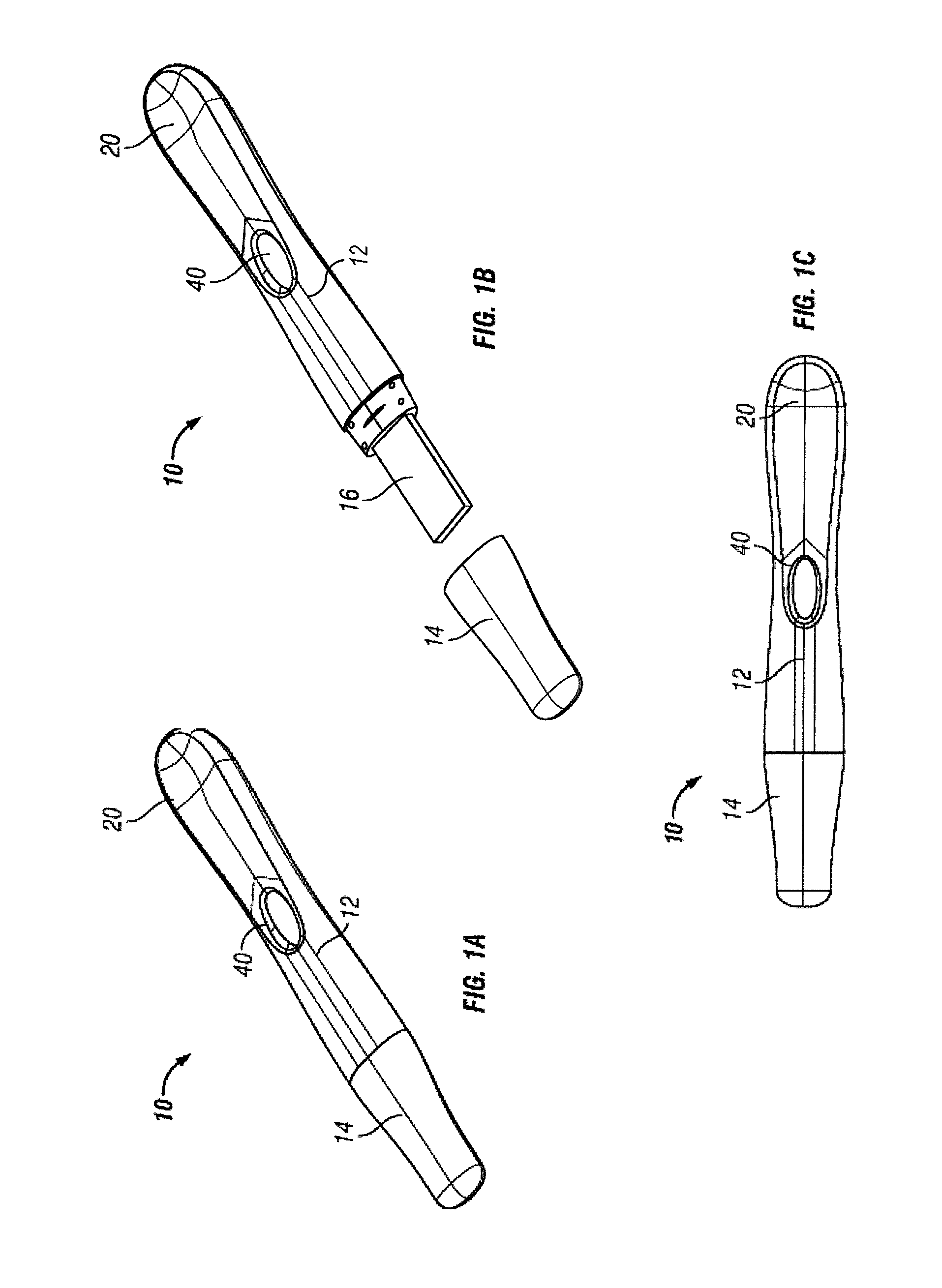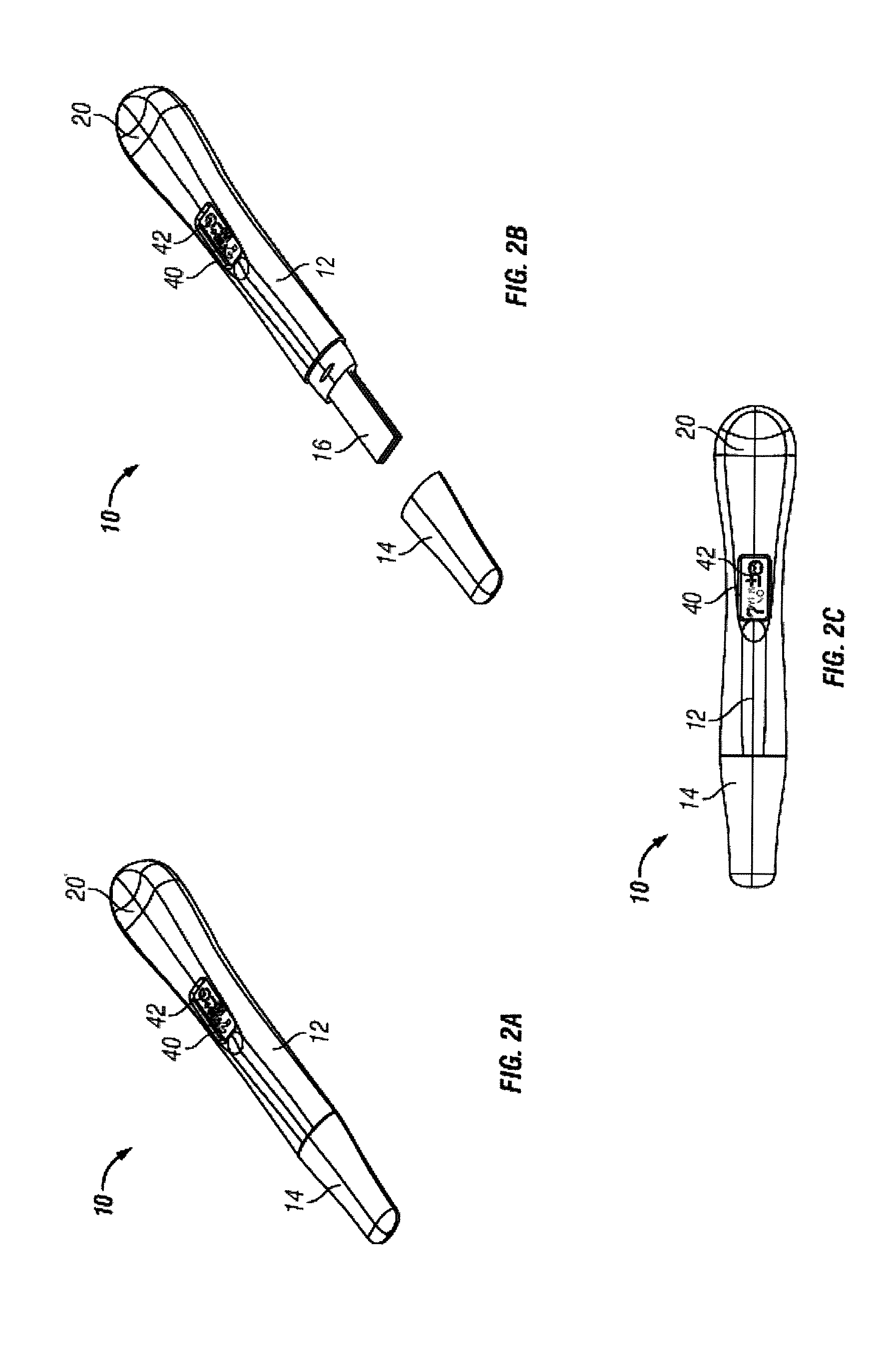Diagnostic detection device
a detection device and detection method technology, applied in the field of diagnostic detection devices, can solve the problems of not being able to detect this isoform, having only limited detection capability for this isoform, and false negative results in urine-based pregnancy tests, etc., to achieve enhanced sensitivity, increase positive results, and use the effect of pregnancy detection
- Summary
- Abstract
- Description
- Claims
- Application Information
AI Technical Summary
Benefits of technology
Problems solved by technology
Method used
Image
Examples
example 1
[0099]Three comparative pregnancy test devices were prepared. All three devices were based on lateral flow technology that utilizes a biphasic material as described herein. Specifically, the biphasic material was a cellulosic release medium and a nitrocellulose membrane on a solid phase support, both of which were laminated onto a MYLAR backing. Upon lamination, the release medium is positioned on top of the nitrocellulose, allowing a small region of overlap between the two to aid in fluid transfer. In all three devices, the release medium was striped with a first reagent comprising a gold-labeled anti-hCG monoclonal antibody that has a high specificity and affinity to all clinically relevant hCG isoforms.
[0100]The release medium was also striped with a second reagent comprising 0.1 mg / mL of a biotin-tagged antibody (“the capture antibody”). In the first device (“known art device”), the capture antibody comprised biotin-tagged monoclonal antibody which recognizes intact hCG, hCG-H, ...
example 2
[0116]The known art device, inventive device A, and control device A from Example 1 were compared against a device prepared with a solution of 0.1 mg / mL monoclonal antibody which recognizes intact hCG, hCG-H, and hCG-β and 0.05 mg / mL monoclonal antibody which is highly specific to only hCG-βcf (“inventive device B”). Inventive device A and inventive device B devices produced comparable visual and BioDot results with intact hCG standards throughout the test range (G-100 mIU / mL, as in Example 1). The incorporation of the antibody which is highly specific to only hCG-βcf did not appear to affect the assay sensitivity against intact hCG.
example 3
[0117]Three comparative pregnancy test devices were prepared as in Example 1; however, in place of antibody which is highly specific to only hCG-βcf, monoclonal antibody with specificity to both hCG-βcf and hCG-β was used, giving a known art device, “inventive device C”, and a “control device C.” The devices were tested in triplicate with negative urine pool, intact hCG, and hCG-βcf urine standards. Samples were allowed to equilibrate to room temperature prior to use. Testing to visually evaluate the response of each device was performed by dipping the devices in the urine standards for 5 seconds and visual results were recorded at 3 minutes. The results are shown in Table 7 and Table 8.
[0118]
TABLE 7Visual Results of Known Art Device, Inventive Device C, andControl Device C Tested with Intact hCG StandardsIntact hCGKnown ArtInventiveControl(mIU / mL)DeviceDevice CDevice CNUP3 / 3 neg3 / 3 neg3 / 3 neg 3.23 / 3 pos3 / 3 pos3 / 3 neg 6.33 / 3 pos3 / 3 pos3 / 3 neg12.53 / 3 pos3 / 3 pos3 / 3 pos253 / 3 pos3 / 3 pos...
PUM
| Property | Measurement | Unit |
|---|---|---|
| mean particle size | aaaaa | aaaaa |
| mean particle size | aaaaa | aaaaa |
| mean particle size | aaaaa | aaaaa |
Abstract
Description
Claims
Application Information
 Login to View More
Login to View More - R&D
- Intellectual Property
- Life Sciences
- Materials
- Tech Scout
- Unparalleled Data Quality
- Higher Quality Content
- 60% Fewer Hallucinations
Browse by: Latest US Patents, China's latest patents, Technical Efficacy Thesaurus, Application Domain, Technology Topic, Popular Technical Reports.
© 2025 PatSnap. All rights reserved.Legal|Privacy policy|Modern Slavery Act Transparency Statement|Sitemap|About US| Contact US: help@patsnap.com



